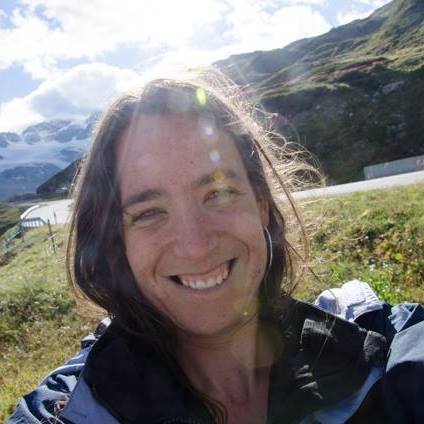Three years ago, my 8 year old daughter came home from school in tears. Between her sobs, I learned that she had been told that her overzealous use of glue stick meant that her kids would die in 2050. As a climate change communicator for over a decade, I realised how urgently our young people needed more support with the climate emergency.
Over the past few years, climate change has become increasingly prominent, with warnings in the news, school strikes, posters warning of a countdown to extinction… While many UK children, and adults, could until relatively recently hide or be protected from the truth of what we face, this is changing, particularly with increased access to media and smart devices.
Climate anxiety is on the rise, with almost half of young people worldwide in a 2021 survey saying that eco-anxiety negatively impacts their everyday life. Climate education remains largely absent from our schools and children are increasingly seeking answers.
And so, it falls to adults like you and me (parents, carers, teachers, scout leaders…) to think carefully about how we engage our children and have the important conversations which will prepare them to survive and thrive.
It can be hard to do this well, and very easy to cause extra anxiety. So, what have I learnt in the last three years about how we should engage, in a way that is honest, but also safe and empowering?
Start with yourself and put on your own oxygen mask before assisting others.
Psychotherapist Jo McAndrews describes children as our Bluetooth speaker: whatever state we are in, children are likely to pick up on and amplify it. When we are in an ungrounded state, we find it harder to respond to situations in the clear-headed, creative, and sensitive way that a good climate conversation requires. Creating emotional connection with others is key to discussing difficult things, and to be able to connect effectively, we need to be in a calm and grounded state.
Ways to start:
-
- Find ways to look after your own emotional wellbeing, get the support you need and ‘build a village’ of supportive others around you. This might be other parents/carers/teachers in your community, or you might look to wider established networks, like Parents for Future.
- Find good sources of information to have at your fingertips; you will inevitably be asked questions you cannot answer. Check out Science Moms, a website created by a nonpartisan group of climate scientists and mothers.
- And importantly, think through what action you want to take yourself to tackle the climate crisis, so you don’t project your own need to do something onto the young people looking to you for guidance.
If you need professional support, many therapists are aware of eco-anxiety and groups like the Climate Psychology Alliance offer tailored support.
For under 7s, you don’t need to mention climate change.
Climate Change is a complex idea. Instead, focus on nurturing young children’s innate biophilia, encouraging a love of the natural world around them and lay the important groundwork.
Jump in puddles, feed ducks, make rainbows, collect autumn leaves.
Starting tips:
-
- Use books and music to introduce, normalise and inspire. Stories don’t have to be overtly environmental in theme; one of my personal favourites is Julia Donaldson and Axel Scheffler’s The Ugly Five, which teaches the intrinsic value of the world’s less beautiful beasts. In Clean Up!, by Nathan Bryon and Dapo Adeola, we meet feisty and loveable Rocket as she pulls a community together to clean up the litter-strewn island where her grandparents live. For a list of books which feature lead characters from diverse ethnic backgrounds, key to building the inclusive environmental movement of the future, see this article on the Low Carbon West Oxford blog. Favourite music includes the songs of Nick Cope and anything by Australian ‘ecological edutainment’ trio, the Formidable Vegetable Sound System. Make it fun, by having a dance!
- Lead by example and explain your actions. Small children notice our everyday actions, and we can add to their learning by taking the time to verbalise our intentions. Talk about why you put things in the recycling bin or leave the autumn leaves on the ground in the garden.
- Start proactively building the skills children will need as they grow up. Build trust, interpersonal skills, emotional literacy. Start with this pamphlet by the Australian Psychological Society.
For 7-11s, a good message is that ‘lots of adults are working on it, but if you want to help, here are some ideas for how you can’.
As children get older, they are much more likely to start encountering the idea and language of climate change. We cannot protect them from it, but we can accompany them and help them find their own way and build their resilience.
Starting tips:
-
- When supporting their learning about the environment, start with what they know already, and build basic knowledge from there.
- Offer a variety of actions that are relevant to their everyday lives. You can find six areas of action, with accessible and concrete ideas in the ‘Climate Challenge’ booklet from KidsCAN. Make sure you also ask THEM for their ideas. They’ll have great ones and be much more engaged if action comes from them.
- Use the power of stories from all over the world; borrow stories from other struggles of how people overcame great odds. And ask them how they think the story should end. A few books to try include:
-
-
- Dr Mya-Rose Craig’s We have a dream: 30 stories of young indigenous people and people of colour around the world taking action to protect the planet
- Tim Allman & Nick Shepherd’s Max takes a stand: the accessible and light-hearted fictional tale of Max, who wakes up one morning and realises BIG CHANGE is needed right now
- Georgina Stevens’s Stella and the Seagull: a picture book about one small girl’s campaign to clean up the beach.
-
-
- Emphasise the importance of talking about how they feel, to enable the processing of emotions, and let them know that all feelings are welcome, however messy, contradictory, and changeable they may be. There are a range of tools you can use to encourage and enable emotional literacy, including emotions cards and ‘the anger iceberg’, and modelling this yourself can really help.
- Be honest and open. Relationships built on trust are key to building resilience in young people. At the same time, it’s important to be mindful of what you expose them to and try to keep information to what they need to know.
- Emphasise it is okay not to have all the answers, and that it is okay if they don’t want to take action or join the youth strike. Show them how to search for reliable information.
A couple of closing thoughts
It’s OK to get it wrong. None of us will get it right all the time but taking the time to think about how you engage is a great first step.
Don’t go it alone. Having a supportive network to draw on, and for any child to draw on, is priceless.
Google is your friend. Keep learning and accept you will not have all the answers.
Good parenting and teaching is activism. You do not need to be engaging in any formal climate activism to be doing important work. Building strong and supportive connections matters, and as Jo McAndrews says, just holding a baby is contributing to a better future.
LOOK AFTER YOURSELF. The climate crisis is scary, and this is a hard time to care for children. Any engagement with others will be far more effective if you are looking after your own needs too.

